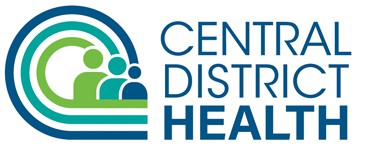BOISE, March 20, 2024 – Central District Health is reminding community members and health practitioners to be proactive towards preventing tuberculosis spread in our communities during World Tuberculosis Day on March 24.
World TB Day is observed each year commemorating the date Dr. Robert Koch announced his discovery of the bacillus that causes tuberculosis (TB) in 1882. This year’s World TB Day shares the theme “Yes! We can end TB”.
In Idaho, there were 15 TB cases reported in 2023, five of those were in Ada County. TB case counts and information is tracked by the Idaho Department of Health and Welfare and can be found at gethealthy.dhw.idaho.gov/tuberculosis.
“While the numbers remain low in District 4, we’d like to see TB end in our communities,” said Sarah Wright, CDH staff epidemiologist. “World TB Day reminds us that there is still a need for TB education and outreach so community members, health providers, and public health partners will continue working together to prevent and stop the spread of TB.”
About Tuberculosis
- TB is a disease caused by bacteria spread through the air, usually through repeated and prolonged exposure in a confined indoor space.
- It often affects the lungs but can affect any part of the body. Pulmonary TB is generally the only type that is contagious.
- Most people who are exposed to TB do not get infected. TB is spread by respiratory droplets. It doesn’t live on surfaces outside of the body. People can’t get TB by walking by someone on the street or by sharing a drink or toilet with someone. It takes a long period of exposure to contract TB.
- People who are infected cannot give TB to others unless they are sick with TB.
- Typical symptoms of tuberculosis disease are a productive cough (coughing up sputum or blood) that lasts at least three weeks, chest pain, fatigue or weakness, weight loss, and fever or night sweats that are persistent for several weeks and usually get worse.
- There are two types of tuberculosis:
- Latent TB Infection (LTBI), when the bacteria is in the body but isn’t contagious and isn’t making the person sick. Latent TB can be treated with antibiotics so that it never becomes active TB. A person can have latent TB and never become sick with active TB.
- TB Disease (Active TB), when the bacteria is in the body, is making the person sick, and is contagious.
TB Testing and Treatment
- People experiencing chronic symptoms who think they may have been exposed to TB should call their primary care provider.
- Testing for TB consists of a skin test or a blood test. If the initial test is positive, a chest x-ray will be done and/or sputum samples will be collected.
- Most cases of TB are treatable with antibiotics that are commonly available. This treatment is done as Directly Observed Therapy (DOT) by a health department employee.
- Patients need to isolate until they are no longer contagious.
Additional facts about TB are available on the CDH website at cdh.idaho.gov/health/communicable-diseases/tuberculosis/.
About Central District Health
CDH, Public Health District IV, is one of seven public health districts within the state of Idaho, serving the counties of Ada, Boise, Elmore, and Valley. With a vision of Healthy People in Healthy Communities, CDH’s emphasis is on decreasing risk factors for chronic disease, improving quality of life and increasing the years of healthy life among residents.
Contact:
Maria Ortega, Communications ManagerOffice: 208-327-8639 | Cell: 208-871-1712
mortega@cdh.idaho.gov | cdh.idaho.gov/news
Follow @cdhidaho (FB, Twitter & Instagram)
###

